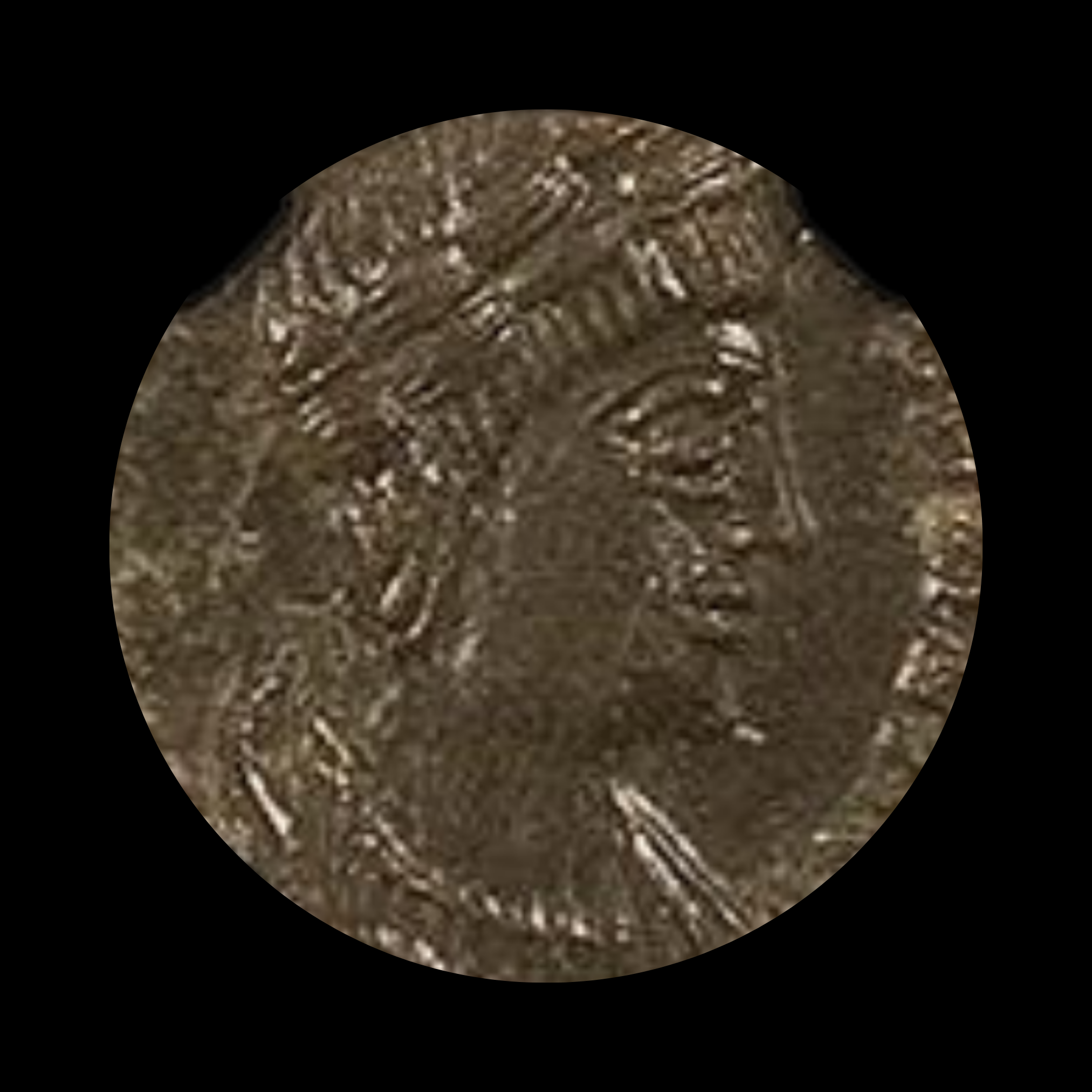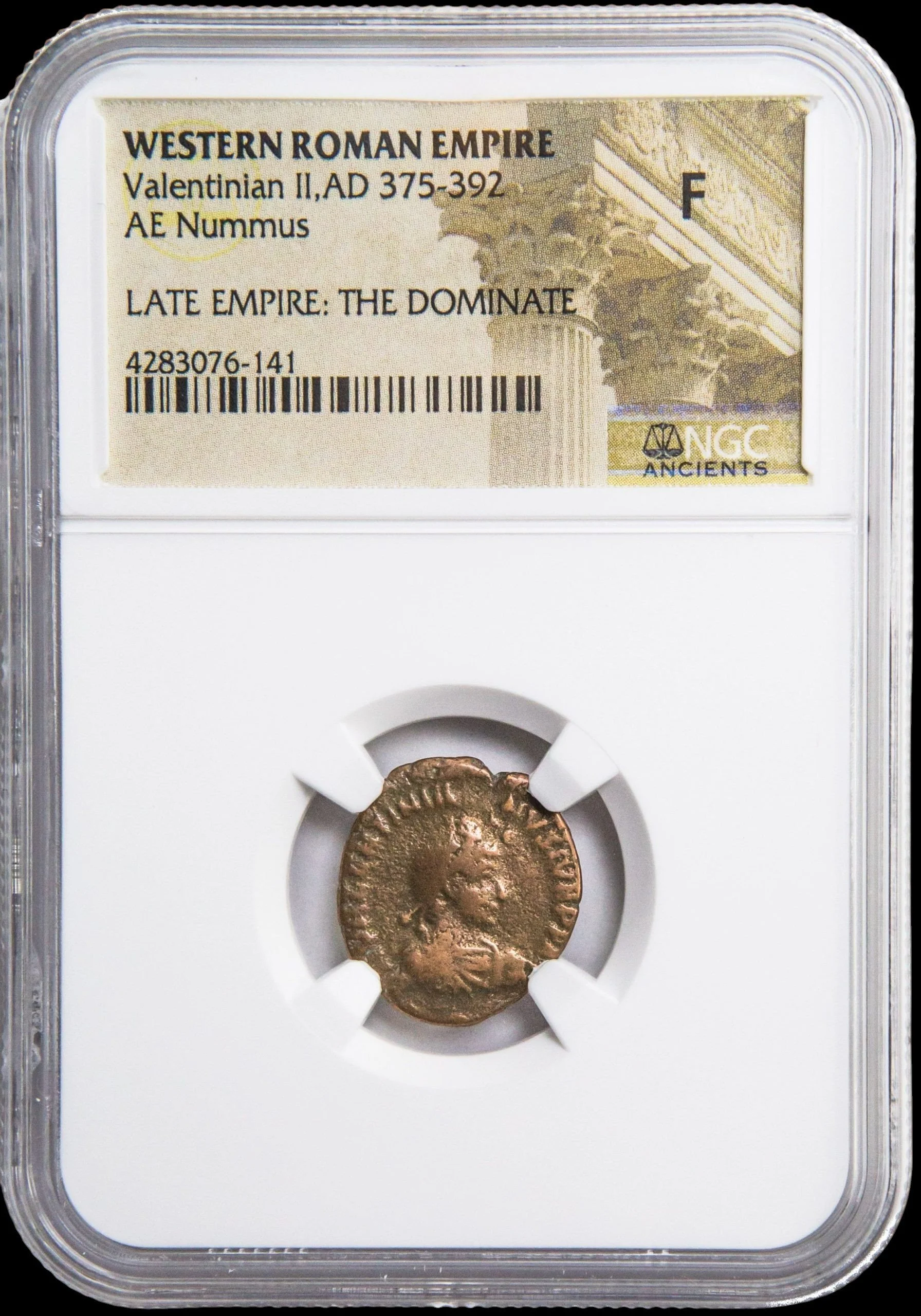 Image 1 of 7
Image 1 of 7

 Image 2 of 7
Image 2 of 7

 Image 3 of 7
Image 3 of 7

 Image 4 of 7
Image 4 of 7

 Image 5 of 7
Image 5 of 7

 Image 6 of 7
Image 6 of 7

 Image 7 of 7
Image 7 of 7








Roman Silver Coin of Empress Julia Maesa (about 1,800-1,810 years ago)
The coins shown are representative examples of the grade and type, but not the actual specimens for sale. For details on NGC’s grading standards and definitions, please refer to our NGC Grading page.
This silver-washed antoninianus depicts Julia Maesa, one of the most powerful women in Roman history who effectively controlled the empire through her grandsons during the later Severan dynasty. As sister to the influential Empress Julia Domna and grandmother to two emperors, Julia Maesa deployed her political acumen and family connections to maintain her family's hold on imperial power during a period of increasing instability in the early 3rd century.
Coin Description:
Front side: Portrait of Julia Maesa facing right, typically shown with a dignified, mature appearance and distinctive hairstyle draped in a crescent, with Latin inscription giving her name and titles
Back side: Likely depicts a female deity such as Pudicitia (Modesty), Pietas (Piety), or Juno, reflecting traditional Roman feminine virtues, with accompanying Latin text
Technical Details:
Silver-washed bronze composition (antoniniani of this period contained minimal silver)
Denomination: Antoninianus (valued at two denarii)
NGC certified in protective slab
Minted between approximately 218-224 AD
Condition as certified by NGC
Historical Significance: Julia Maesa stands as one of antiquity's most influential female power brokers. After Emperor Caracalla's assassination in 217 AD left her family out of power, she orchestrated an extraordinary comeback by convincing troops that her teenage grandson Elagabalus was Caracalla's illegitimate son. When Elagabalus proved unstable with his controversial religious practices and scandalous behavior, Julia Maesa pragmatically arranged his elimination in 222 AD, smoothly transferring power to her other, more conventional grandson Alexander Severus. Her political maneuvering kept her family in power and herself as the empire's de facto ruler until her death around 224 AD, after which she received the ultimate honor of deification—a testament to her remarkable influence in a society where women held no formal political authority.
The coins shown are representative examples of the grade and type, but not the actual specimens for sale. For details on NGC’s grading standards and definitions, please refer to our NGC Grading page.
This silver-washed antoninianus depicts Julia Maesa, one of the most powerful women in Roman history who effectively controlled the empire through her grandsons during the later Severan dynasty. As sister to the influential Empress Julia Domna and grandmother to two emperors, Julia Maesa deployed her political acumen and family connections to maintain her family's hold on imperial power during a period of increasing instability in the early 3rd century.
Coin Description:
Front side: Portrait of Julia Maesa facing right, typically shown with a dignified, mature appearance and distinctive hairstyle draped in a crescent, with Latin inscription giving her name and titles
Back side: Likely depicts a female deity such as Pudicitia (Modesty), Pietas (Piety), or Juno, reflecting traditional Roman feminine virtues, with accompanying Latin text
Technical Details:
Silver-washed bronze composition (antoniniani of this period contained minimal silver)
Denomination: Antoninianus (valued at two denarii)
NGC certified in protective slab
Minted between approximately 218-224 AD
Condition as certified by NGC
Historical Significance: Julia Maesa stands as one of antiquity's most influential female power brokers. After Emperor Caracalla's assassination in 217 AD left her family out of power, she orchestrated an extraordinary comeback by convincing troops that her teenage grandson Elagabalus was Caracalla's illegitimate son. When Elagabalus proved unstable with his controversial religious practices and scandalous behavior, Julia Maesa pragmatically arranged his elimination in 222 AD, smoothly transferring power to her other, more conventional grandson Alexander Severus. Her political maneuvering kept her family in power and herself as the empire's de facto ruler until her death around 224 AD, after which she received the ultimate honor of deification—a testament to her remarkable influence in a society where women held no formal political authority.
































